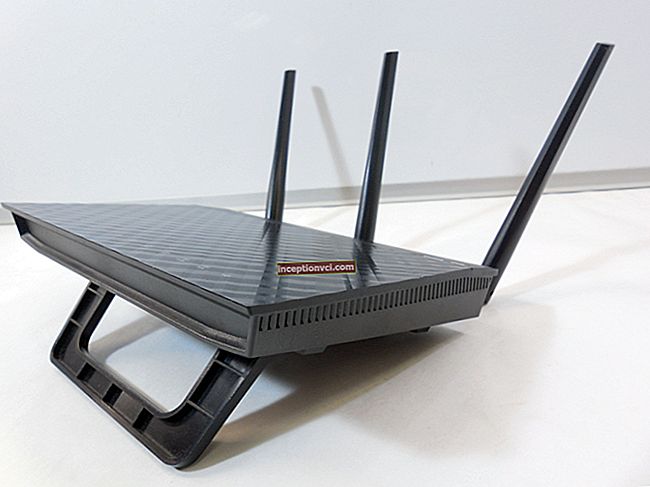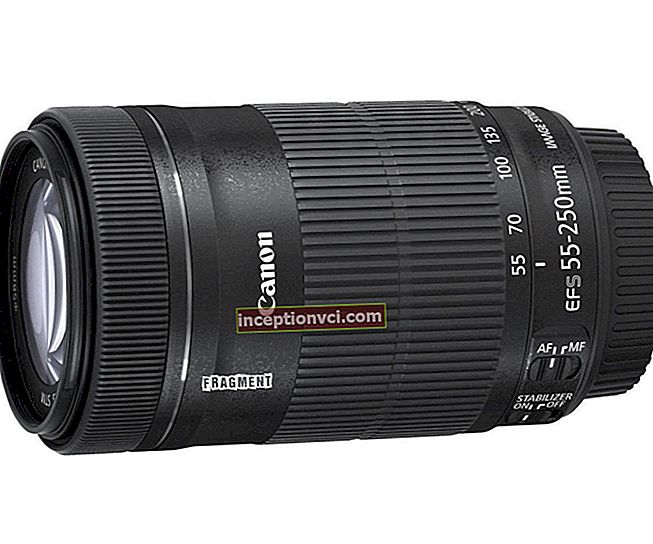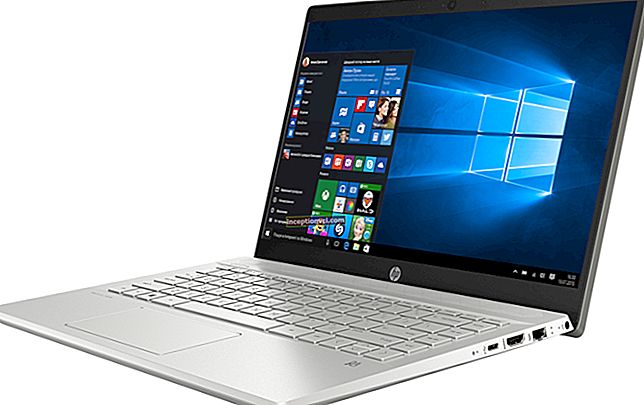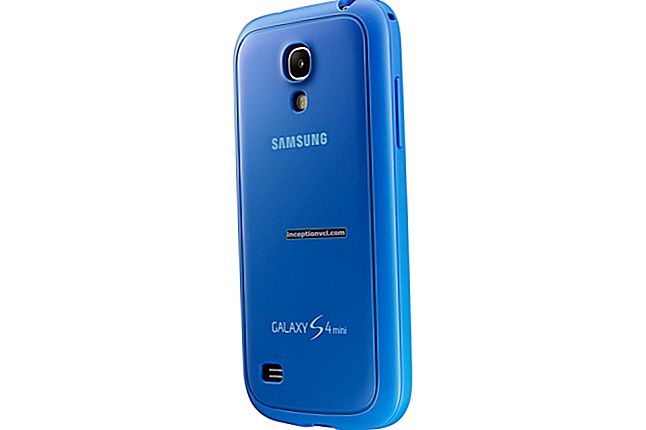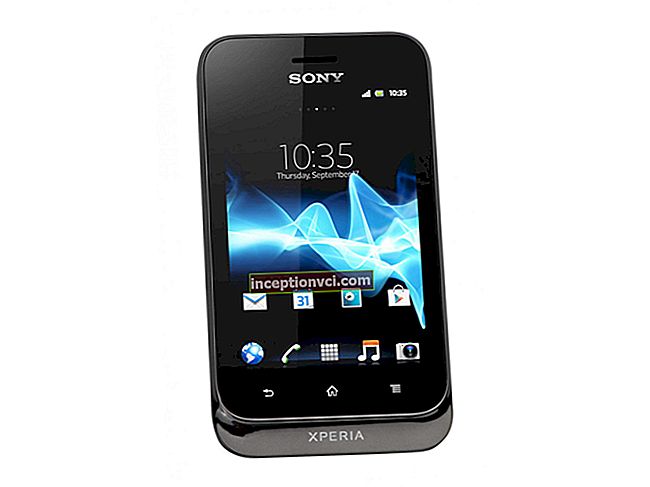"Gaming PC" Monitors: IPS or 120Hz?
The question that very often comes to the surface of the cultural Internet community and involves many in long discussions arises in the field of determining the most suitable monitor for gaming and, at the same time, is a stumbling block when choosing the type of monitor panel - IPS or 120 Hz TN matrix ... In addition, there is often an additional layer of complexity here, as some people feel that their choice should fall exclusively on the larger and more expensive monitors with a screen diagonal of 27 inches, where, by the way, even the native resolution can deviate from the standard. For the sake of this, in the article we will consider one model of such monitors - the very famous 27-inch display with an IPS panel, Dell U2711 (monitor photo below).

Although there are other options with the same "WQHD" (Wide Quad High Definition) resolution (2560 x 1440 pixels) and a screen size of 27 inches. For example, an IPS monitor such as the 27-inch Apple LED Cinema Display or various Hazro models, which often act as an obvious choice criterion that takes advantage of the presence of a quality mixture of features and characteristics in terms of compatibility, useful functions, image quality, responsiveness, productivity, and brand and enterprise awareness.
For the sake of target comparison, in this article, the Samsung S27A950D will be on the side of the 27-inch 120 Hz monitors, since it is very different from the U2711 display at almost every level:
the native resolution of this instance is 1920 x 1080 pixels,
high scanning frequency of the TN panel is equal to 120 Hz,
"Ultra Clear" screen coating.
It is also one of the "fastest" 27 "LCD monitors currently available in terms of pixel responsiveness and is often highly regarded on gamers' wishlists, but certainly has a high price tag.

Many users very often fall for the idea that widescreen monitors with IPS panel type and high resolution will automatically outperform all others, offering true image quality, and are the best solution available. Likewise, there are many supporters of the idea that any monitor with an IPS type of matrix is rejected and they are already considered "unsuitable for games", which, in my opinion, is completely unfair and in vain in relation to them. However, as you might guess, the reality of the state of affairs turns out to be much more complex, which makes this particular comparison a little more interesting. For example, both monitors analyzed have not only different types of panels, but also a difference in the coverage of the screen surface.
Perhaps, it will not be superfluous and, perhaps, appropriate for determining the potential advantages of both models U2711 and S27A950D, go to a more expanded list of their characteristics and properties. Let's first turn to the most recognizable and almost unconditional advantages of the U2711 model when it is directly intended for use in the field of entertainment computer games.
So this:
the possibility of adjusting the position of the display in height, the presence of a rotational and tilting mechanism, an expanded possibility of positioning the monitor by means of a mounting bracket (maximum size - 100 x 100 mm VESA);
the anti-glare surface of the screen allows the monitor to reproduce a fairly consistent video image in a wide range of room lighting conditions and, moreover, largely free from excessively bright light or a predisposition to the appearance of reflections on the screen;
2560 x 1440 native screen resolution allows you to demonstrate the superior level of detail that will be displayed in games, while ensuring productive use of desktop space;
wide color gamut can be quite pleasantly surprising in some games and provide the highest level of image quality - SRGB emulation mode is also provided;
excellent color consistency and a variety of reproducible shades.
This actually applies to any IPS panel, not just the individual monitor model U2711. Despite the fact that the smaller and cheaper IPS-matrix of the monitor (for example, U2412M) with 6-bit color depth per sub-pixel and the use of extrapolation of color shades through technologies such as "Frame Rate Control" and dithering (also as in TN panels), such panels still demonstrate obvious successes in high-quality and full color reproduction. And given how brilliantly these algorithms are implemented in a modern IPS panel, I don't think the word "emulation" of 24-bit color (8 bits per RGB channel) should particularly confuse the average user. Moreover, the difference visible to the naked eye in this case is very difficult to determine even for professional graphics specialists. For a deeper understanding of this, you can find on the Internet a detailed review of the U2412M monitor with further explanations of how this process affects color reproduction in games and films. High-quality IPS panels produce very stable and consistent colors and can clearly display subtle differences between color shades. This is, of course, one of the attractive aspects of IPS technology, regardless of where it manifests itself - in computer games or in an office environment.
Some monitors with TN-matrix (for example, the model S27A950D) also show good performance in terms of display accuracy of a good range of color shades, and also quite skillfully hide the traces of the "vital activity" of the dithering technology. However, the problem is that the above-mentioned tricks of the manufacturers of the considered type of display matrices are usually quantitative in nature, and the final readings are usually taken when testing only the central area of the screen using a colorimeter or a similar device for calculating the image quality. If you, for example, fill the screen of such a display with any one color, then after some analysis you will see that there may be noticeable deviations across the entire screen. This is largely due to the gamma curve of the monitor so much that, being dependent on fairly wide viewing angles, a certain color on such panels will look different depending on its location on the screen. This can be especially well emphasized by the analysis of viewing angles ("Viewing angle" test) using the familiar test service "The Lagom LCD monitor test", designed for liquid crystal displays. But this color change can also be seen in computer games in the form of many familiar effects, when some shades lose their individual "color authenticity" and are crushed into other similar shades. Some great examples of where this will be especially noticeable would be trying to detect color diversity in a vegetation image (especially in an area with different greens and browns and different woody textures).
Now let's move on to another corner of the ring and try to list the advantages of the next participant - the S27A950D monitor.
The main advantages of the S27A950D model when using it in the field of computer games:
low input lag of the display (Input Lag) of the monitor, which allows it to respond more quickly to the input signal from the user, thereby providing the opportunity for computer players to feel most comfortable;
excellent image variety and great variation in shadows;
the screen resolution of 1920 x 1080 pixels is much more "friendly" to many modern graphics adapters and is still capable of delivering very good visuals in today's games;
improved pixel response reduces visible negative effects when playing a variety of video material.
Judging by the above properties of the displays in this review, it should be said that how much difference between them will be felt - it all depends on the sensitivity of users to such things as the pace of their games and the frame rate that they can withstand.
Compared to a highly responsive 60 Hz monitor, only the S27A950D can deliver truly superb smooth gaming at over 60 frames per second (the higher the better). Textures during fast moving objects in game at 90 frames per second are noticeable much sharper and more accurately than at 60 frames, and even more at 120 frames per second. For the sake of comparison, the S27A950D delivers superior pixel responsiveness than the U2711 monitor at 60fps or lower, but many people find the U2711's display to be more than adequate in terms of pixel response for most games.
At the same time, it should be understood that the S27A950D model, of course, cannot compare in color stability and a variety of subtle shades with the U2711 monitor, but it is still able to distinguish itself with good performance when displaying a wide range of subtle colors, thereby providing the highest level of brightness and "popular "popular image close to all users. This factor really becomes apparent and only begins to really affect good display when you slightly optimize the initial monitor settings to suit individual preferences.
Such a development of the process and a positive result can be seen on the example of the T27A950 monitor. Here, the process of adjusting the display image is not much different from that of the S27A950D monitor model, but the main thing is that the end result is the same. It should be noted that the U2711's widescreen display can also provide good levels of saturation and brightness over a very wide gamut of its color gamut, but many people find that the natural gamut of the U2711 reproduces greens and reds as highly oversaturated, which is especially noticeable when viewing normal (color srgb space) of content such as computer games.
It should also be noted that the effectiveness of subtle hue changes and natural aesthetics of color are lost in the S27A950D monitor. The difference in the display of the monitors in question in the "SRGB" mode is mainly due to the difference in the coverage of the screen surface. Samsung has chosen its "Ultra Clear" (ie smooth and glossy) panel for the S27A950D monitor, which allows a significant amount of direct light emission from it. The Dell U2711 display has an anti-reflective coating (roughly speaking, has a rough matte surface) that diffuses light.
The difference in display can be caused by more than just external ambient light. And we know that it often provides hateful reflections, reflections and troublesome glare. It should be understood that the difference during playback also depends on the light that is emitted by the monitor itself. In this case, the color may lose some of the "purity" and brightness, so there is a danger of a visible "nebula" on the entire surface of the screen reproduced by such a display of the present white and light tones - the end result of this is almost the same as can be observed in the U2412M model ... Although this "nebula" affects all colors and leads to the display of "dirty" textures, the real evidence of this was found in practice only against the background of blue skies, snowy areas and light sources in some computer games. The U2711 panel actually has the same "nebula" characteristics of the U2412M, but due to the smaller pixel pitch, the light becomes more sharply diffused, and the graininess is accordingly more visible.
Since Samsung is primarily intended as a gaming monitor for use in the home environment, where lighting conditions in a room can be reasonably controlled, they found the "Ultra Clear Panel" (UCP) screen coverage to be a good choice to truly get the most out of your home. their 950th series of monitors. Samsung engineers have also confirmed that the "Ultra Clear" panel surface is flexible in implementing this technology and could soon be made more "serious" (ie less reflective). Needless to say, in the office environment for which the Dell UltraSharp series is primarily intended, matte screen solutions make sense.
But as the advances in current professional types of matrices show PLS ("Plane-to-Line Switching" technology, which bears some resemblance to an IPS panel and advertises improved viewing angles, image quality, increased brightness and lower manufacturing costs) and VA matrices from Samsung, as well as VA panels from the leading corporation AU Optronics and used by BenQ, then, perhaps, there is no need for LG to produce IPS monitors with such a high "foggy" flaw.
Some IPS panels (notably the Apple Cinema Display and some Hazro models) have an extra glass coating over the smooth polarizing surface or simply have a glossy polarizing layer on the screen. These IPS monitors still benefit from the aforementioned color brightness from the advantages of UltraClear panels combined with excellent display shade variability (especially in ideal lighting conditions); believe me, the effect of this can be quite overwhelming. It should be noted, however, that the lighting conditions under which such models can be most comfortably used without the presence of reflections on the screen or image washout are even more stringent than in the case of monitors from Samsung. The notion of "screen surface", of course, requires more in-depth analysis, but at the same time in the photo below there is a good illustration of how much the current display screens from Dell with an alternative glossy surface ("TrueLife") depend on external immoderate bright light ( in the image below, you can clearly see the reflection of the hand with the camera).
Although Dell says this new anti-glare technology has a higher contrast (the difference between deepest black and lightest pixel), produces sharper, more colorful images, absorbs more ambient light and has wider viewing angles than traditional screens. ... Please also note that despite this "anti-glare" screen coating, the image becomes slightly blurry and thinking about this can already be a cause for concern.
So, having gone through the consolidation of the considered "arguments", you can see that in reality it is very difficult to find an intelligible, clear and clear answer to the question of which monitor model is actually the best solution for use in the field of games - a device with an IPS matrix or 120 hertz display with TN panel. As is often the case with such a subjective concept as the choice of a personal computer monitor, the definition of the current topic of the article in the issue under consideration actually depends on what you decide after getting acquainted with the features of a particular type of display; There is no way to unambiguously summarize what the gamer is looking for when it comes to his hypothetical "gaming monitor."
Many of the controversial issues raised in the review relate not only to the two specific monitors that were taken as examples for this article, but also carry over to other monitors with IPS-matrix and models with a panel frequency of 120 hertz.To many people who often fantasize that the ideal model for gaming is only a 120 Hz panel display, perhaps I must say that an IPS monitor (with an appropriate screen coverage surface) would be much closer to the formula for an ideal gaming monitor. Therefore, it would be very naive to assume that either a 120 Hz TN monitor panel or a model with an IPS matrix is the most ideal solution. As regrettable as all this may sound to some ardent supporters of this or that type of monitor for gaming, but, unfortunately, this is the case at the moment.
